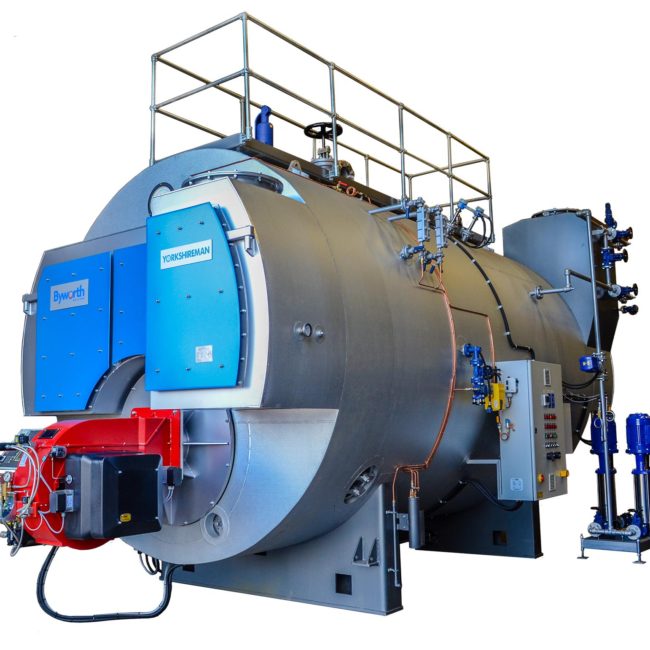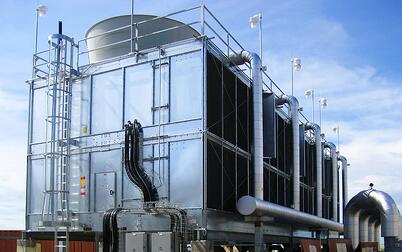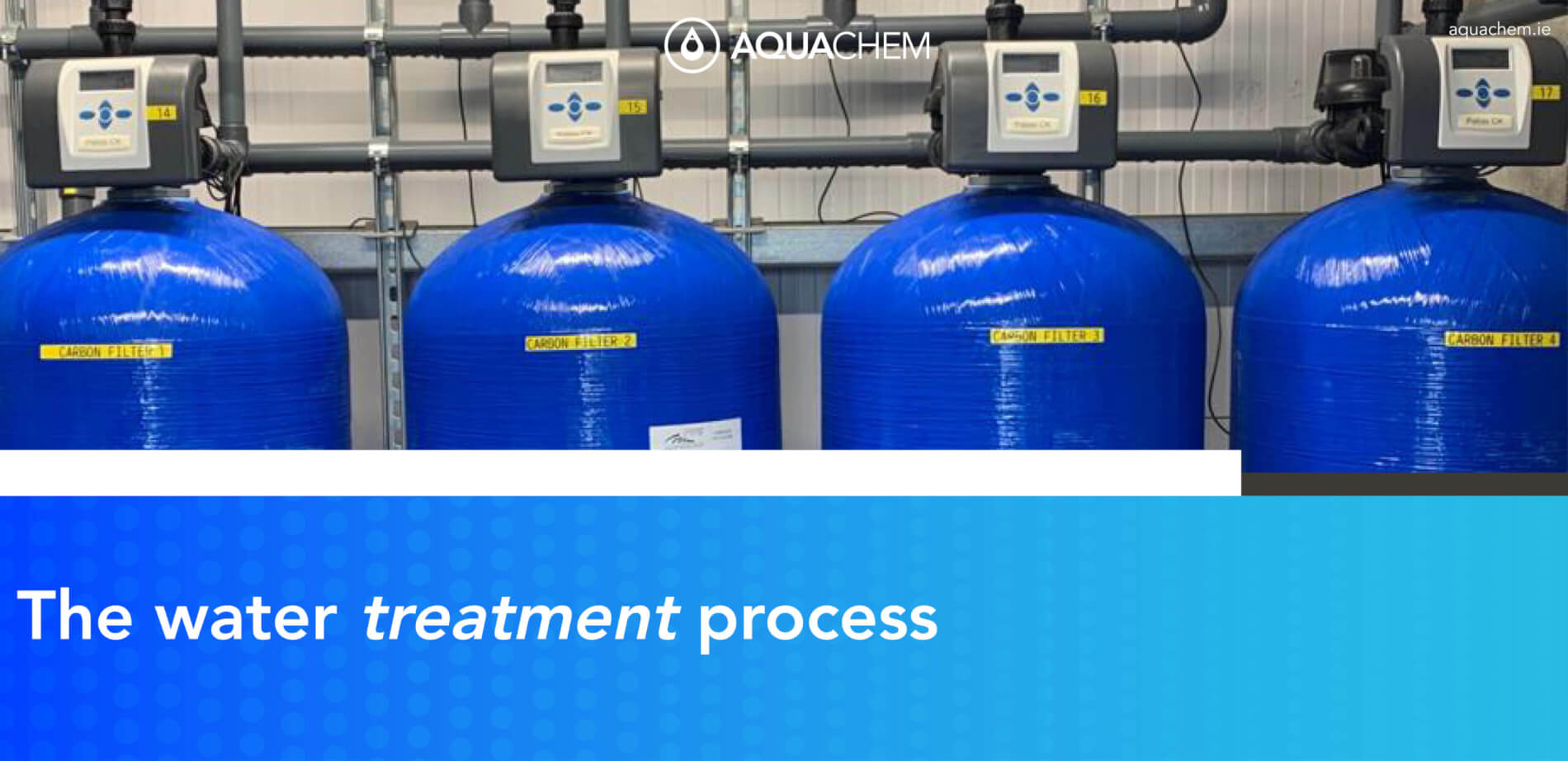The water treatment process
Water plays a vital role in everyday life, from having a cup of tea or doing the dishes at home to the work you don’t see, such as production and manufacturing and the operation of essential equipment in industry such as cooling towers & steam boilers; but did you ever question what process must it do through to get to this stage?
Industrial water treatment is a complex mix of technologies and systems and range from relatively compact and straightforward to complicated, multiunit processes that serve a variety of applications.
Industrial facilities and commercial businesses can have a variety of contaminants in their water systems, in this blog we will take a look the treatment process for water and how a water treatment plan helps you.
The process of a water treatment system
An industrial water treatment system treats water so that it is more appropriate for its given use, whether for consumption, manufacturing or disposal.
Each system will vary depending on the facility’s requirements and many of the technologies that make up these systems can be similar. The technologies selected and in what order they appear in each water treatment system will vary depending on the contaminants that need to be removed.
Some of the most-needed industrial water treatment systems typically include:
- Raw water treatment systems
- Boiler feed water treatment systems
- Cooling tower water treatment systems
Raw water treatment systems
Raw water is untreated water that occurs naturally in the environment, including sources such as rainwater, groundwater, wells, lakes, and rivers. In industrial settings, raw water can be used for cooling, rinsing, product formulations, or even human consumption if it is properly purified.
Raw water treatment systems are used for pre-treatment and optimization of source water, usually with the aim to improve production efficiency and process performance for a particular application. (e.g cooling tower/boiler feed water, process/production water, and/or water for drinking.)
Often, raw water treatment is focused on protecting downstream equipment from scaling, fouling, corrosion, and other forms of damage or premature wear due to contaminants present in the source water. Raw water treatment systems typically remove suspended/colloidal solids, silica/colloidal silica, iron, bacteria, and hardness.

How they work
- Intake
Raw water is drawn into a plant through gravity and/or pumps and is usually passed through a metal grate or mesh screen to prevent large objects from entering the system.
- Clarification
The water then continues for clarification, which is the step used to remove suspended solids from a solution.
- Disinfection
If biological contamination and/or water potability is a concern, the water may then be disinfected to remove any pathogens.
- Lime softening
In some cases, a lime softening step may be added to reduce hardness in streams with high mineral content.
- Ion exchange (IX)
In some cases, the raw water treatment system may include an IX unit for hardness removal, or other specialized treatment needs.
- Distribution
Following treatment, the water is pumped or otherwise routed for use elsewhere in the facility.
Boiler feed water treatment systems
Boiler feed water treatment systems are used to protect boiler unit components and piping from damage due to certain contaminants present in the boiler and/or makeup feeds.
These contaminants may include dissolved solids, suspended solids, and organic material, such as iron, copper, silica, calcium, magnesium, aluminum, hardness, and dissolved gases.
Without proper treatment, boiler feed water can cause scaling, corrosion, and fouling of the boiler and downstream equipment, which can result in costly plant downtime, expensive maintenance fees, increased fuel consumption and boiler failure.

How they work
An effective boiler feed water treatment system works by both removing harmful impurities prior to entering the boiler as well as controlling the acidity and conductivity of the water. While treatment trains vary, a typical system will consist of primary treatment and possibly polishing depending on the boiler pressure, steam use, and chemistry of the boiler feed and makeup water.
- Makeup water intake
As boilers are used, they lose water to steam consumption, loss of condensate return, and leaks. This water must be replaced with what is known as makeup water. Makeup water may be drawn from a treated city supply or a raw water treatment system.
- Filtration
The stream is typically filtered through one or more filtration units for removal of sediment, turbidity, and organic material.
- Softening
IX is often used for removing hardness from boiler feed water, including bicarbonates, sulfates, chlorides, and nitrates.
- Dealkalization
Alkalinity can cause foaming and carryover in boilers, as well as corrosion in piping. Therefore, boiler feed streams are often treated with strong anion IX, or weak acid IX followed by degasification, which serve to remove bicarbonate, sulfate, and nitrate ions, reducing pH.
- Reverse osmosis (RO) and nanofiltration (NF)
RO and NF are not always used for boiler feed water treatment, however, they can be useful for removal of bacteria, salts, organics, silica and hardness. RO and NF are both types of membrane filtration, meaning that they employ a semi-permeable membrane to capture any contaminants too large to fit through their pores, while allowing water molecules to flow through.
- Primary ion exchange (IX)
For large volumes of water or high pressure boilers, deionizers may be used instead of membrane filtration.
- Deaeration or degasification
Deaeration/degasification is the removal of dissolved oxygen and carbon dioxide from the liquid stream, which is important for preventing corrosion.
- Polishing
Depending on the boiler requirements, polishing technologies may be required. This step can follow RO or primary IX. Typical polishing technologies include mixed bed deionization (DI), electrodeionization (EDI), or offsite regenerable DI.
- Distribution
Following all treatment steps, the boiler feed water is piped to the boiler, where it is heated to form steam. The condensate can then be combined with treated makeup water, and the cycle begins again.
Although these steps represent common boiler feed water system trains, it is important to understand that an individual boiler’s unique makeup/chemistry is an extremely complex calculation that will dictate the technologies needed.
Cooling tower water treatment systems
Cooling tower water treatment systems are used to protect cooling tower components from damage due to contaminants present in feed water, circulation water, and/or blowdown water. These contaminants may include chlorides, hardness, iron, biological materials, silica, sulfates, TDS, and or TSS.
Untreated cooling tower feed water can cause scaling, corrosion, biological growth, and fouling of cooling tower equipment, which can result in costly plant downtime, reduced productivity, and excessive maintenance or equipment replacement costs over time.

How they work
An effective cooling tower water treatment system works by removing harmful impurities in line with the manufacturer recommendations for water quality requirements for the type of cooling tower used
- Makeup water intake
As water circulates through a cooling tower system, a portion is lost to evaporation, bleed to drain, and leaks. This water must be replaced with what is known as makeup water. Like boiler makeup water, cooling tower makeup water may be drawn from a variety of sources, whether raw water, municipal water supplies, wells, or recycled plant wastewater. In some cases, source water must also be treated for hardness or silica removal and/or pH adjustment.
- Filtration
Upon intake, the stream is typically filtered through one or more filtration units for removal of sediment, turbidity, and organic material.
- Softening
If there’s high hardness in the source/makeup water, a softening resin or membrane softener can be used. These contaminants, if present, will otherwise cause scale deposits and rust.
- Chemical addition
Next, the stream will usually undergo some form of chemical treatment, which can include the application of corrosion inhibitors to neutralize acidity; algaecides or biocides to reduce growth of biological contaminants; and/or scale inhibitors to prevent contaminants from forming scale on pipes and other components.
- Side-stream filtration
Many cooling towers are designed to recirculate water following use. If this is the case, a side-stream filtration unit will be helpful in removing any problematic contaminants that have entered through drift contamination, leaks, etc
- Post-treatment
There are various types of post-treatment options that may be used depending upon plant conditions. If large quantities of water are required for cooling, or if water is scarce at the facility’s location, plants may opt to treat the blowdown water with RO or IX and reuse it.
Conclusion
The benefits of Industrial water treatment system are many, contaminated water is not only dangerous to health, but can also cause corrosion of pipes, boilers, etc.
By making use of an Industrial water treatment system for your facility, you are safeguarding the health of all, and keeping undue breakdowns & costly repair to the minimum. It also helps maintain the quality and consistency of the products manufactured.
Contact us at Aquachem if you want any more information on a water treatment plan.







